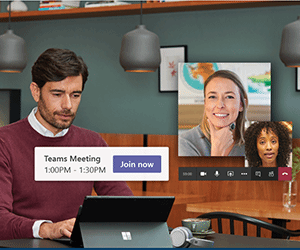By taking a modern approach to endpoint management, IT teams have an opportunity to reduce complexity, lower costs, make their organizations more secure, enhance the user experience and support the shift to a more distributed workplace whereby teams can be productive anywhere.
Given these myriad benefits, the questions aren’t about whether to modernize endpoint management; the questions are what does modern endpoint management look like and how can your organization get there as quickly as possible.
Here’s what you need to know.
The Modern Management Model
The typical legacy endpoint management model assumes every device managed by IT is owned by the organization and connected to an on-premises network. Group policies lock down how each user operates the device assigned to them.
Given the state of the world, you can throw that model out the window.
It doesn’t work for IT, placing heavy demands on already overburdened IT staff, often ratcheting up the total cost of device ownership. And it doesn’t work for end users, who are accustomed to a more “consumerized” experience that is simple, intuitive and self-service, empowered by modern, mobile, user-friendly devices that deliver seamless access to their apps and data.
From IT’s perspective, a modern management model means simplified and automated management capabilities throughout the device’s entire lifecycle from before deployment, during its use and when it is time to be retired or redeployed.
IT should be able to use tools, such as Azure Active Directory in concert with Microsoft Intune, to centrally manage all types of devices, including modern Microsoft Surface devices, other endpoints and BYOD.
Today’s IT admins must be able to manage from anywhere and easily onboard users, add new features, change policies, modernize security protections and do everything else using a consistent, integrated platform, preferably managed from the cloud.
A modern management platform must also deliver an experience to end users that is comparable to what they would expect in the consumer world, i.e.: easy to use and deploy; reliable throughout the lifecycle; applications with which they are familiar and comfortable; simplified security; and solutions that integrate software with a modern device to enhance productivity and make it easy to work and collaborate from anywhere. For a deeper dive into modern endpoint management, please download the eBook: “Three ways you can modernize device IT and improve productivity.”
Business Benefits
The business benefits of moving to a modern endpoint management platform can be dramatic—in cost savings, productivity, collaboration capabilities, security, compliance and other areas.
Forrester Research conducted a Total Economic Impact Study™ across hundreds of customers that had deployed a modern management platform using Microsoft 365 Enterprise on Microsoft Surface devices. Among the key findings:
- IT administrators saved 2.5 hours per application provisioning request and more than 25 minutes configuring each device by using a platform model and leveraging integration solutions, including Microsoft Surface, Microsoft Autopilot, Microsoft Intune, Windows 10 and Microsoft 365 Administration Center.
- Cybersecurity teams reduced breach remediation costs by 80% and the number of annual breaches by 50%. Key contributors were two-factor authentication, Advanced Threat Analytics and Surface Enterprise Management Mode (SEMM).
- Organizations saved an average of $11.13 million over three years with an average return on investment (ROI) of 112%.
- Employees more than doubled their communication, information sharing and business workflows, equating to productivity gains of more than 12% per week.
- Business leaders accelerated their decision-making process by more than 20%.
- Collaborative teams streamlined creative tasks by more than 5% per week using the combined creative features and capabilities of Surface and Microsoft 365, including Pen, Touch, Dial, 3D in PowerPoint and collaboration features in Microsoft Teams.
The numbers reveal not just specific, measurable benefits to the business, but also reflect for business leaders a positive long-term impact on morale and corporate culture for end users as well as IT.
According to Forrester, 76% of survey respondents said Microsoft 365 and Surface improved employee retention; 75% said the combination improved employee satisfaction; and 71% said they believe that Microsoft 365 and Surface positioned their organization as a top employer.
Taking the next step
The path to a modern endpoint management platform is a simple one. Any organization using Microsoft solutions such as Microsoft 365 can take advantage of a unified approach by adding Microsoft Surface devices to the software they already have in place. See the interactive guide: “Modern Endpoint Management: Why ‘built in’ is better than ‘bolt on.’”
The business benefits are not only dramatic, they can also be achieved almost immediately, a particularly important factor in today’s environment where user and IT needs are constantly changing.
Are you ready to take that next step? Visit Microsoft to find out how your organization can modernize endpoint management quickly and easily.

